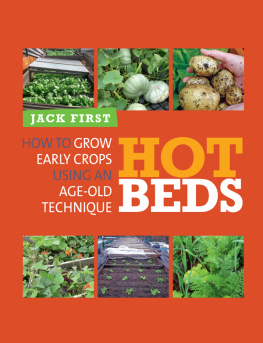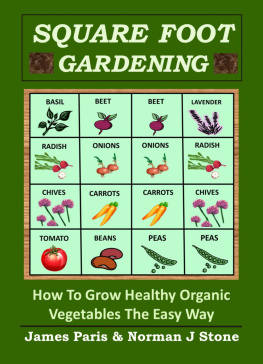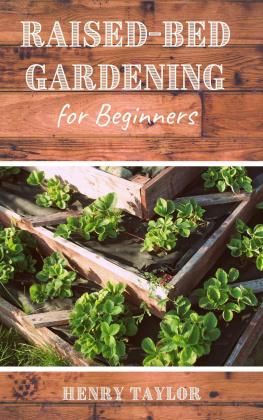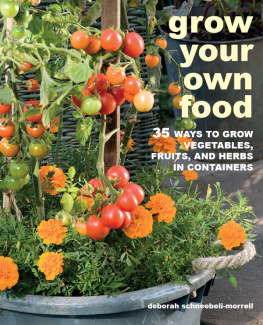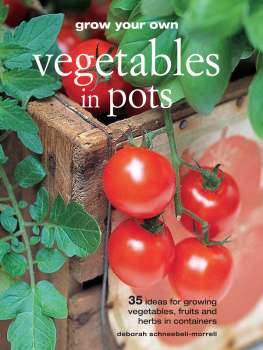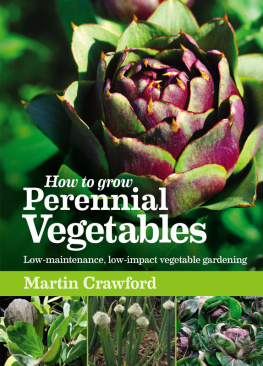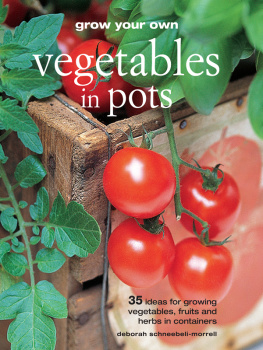HOT
BEDS

JACK FIRST
HOT
BEDS
HOW TO GROW EARLY
CROPS USING AN
AGE-OLD TECHNIQUE

First published in 2013 by
Green Books
Dartington Space, Dartington Hall,
Totnes, Devon TQ9 6EN
2013 Jack First
All rights reserved
No part of this book may be used or reproduced in any
manner without written permission, except in the case of
brief quotations in critical articles or reviews.
Design by Jayne Jones
With the exception of the following, all photographs are by
the author. Page 12: from French Gardening by Thomas Smith
(1909). Pages 28, 37, 41, 98, 101: Bill Jones. Page 30: Bee West.
ISBN 978 0 857841 06 3
Printed on Arctic Matt paper
by Latimer Trend, Plymouth, UK
ACKNOWLEDGEMENTS
My thanks go to all those involved in the production of this book: all members of The Cellar Project past and present between us we moved many tons of manure and leaves and to those in desktop publishing at The Cellar Project, with special thanks to Grayham Mills, Kenneth Scotland, Graham Stroud, Michael Housley, Mark Gerald Snowden & Suzanne Holbrey; John Baker, Head of Horticulture at Shipley College; Arnold Robinson of Lower Wynter Edge Farm for information on all equestrian matters; Jane Gibbon for writing a synopsis and helping produce a manuscript (her eloquence has helped where mine has failed), and Marion Pencavel for introducing me to Jane; Paddy, my supplier of stable manure at Aire View Equestrian Centre; Mel Smith and his crew for delivering leaves from Keighley parks; Bill Jones for photographs; Richard Hirst and Joanne Henry. Finally, many thanks to my dear wife Christina, who, over the years, has had to put up with a lot of FYM!
Authors note: I have tried my best to impart the principles and methods of hot bed production, but realise that not all knowledge can be put down on paper and that there is only one way to correct this shortfall: by your own endeavour and practical experience. I have used and suggested various approaches but realise that other methods will also work so now it is your turn.
Dedicated to my brother David:
loved by all who knew him

INTRODUCTION
As a general rule it is not possible to grow crops early in the British Isles and other temperate zones. By early I mean the period between January and April, and in some areas even later. Cold wet soils preclude sowing, as seeds can only grow and thrive in warmer conditions. Prolonged periods of rain in spring or early summer can often further frustrate the gardener. This is a shame, because after 21 December daylight gradually lengthens, and light is a major stimulus to plant growth. If only somehow we could pre-warm the soil and enable plants to grow in an environment free from adverse weather conditions... well, we can! Read on.
CHAPTER 1
Hot beds are nothing new
The problem of growing crops early in the British Isles and other temperate zones was pondered and answered at least two thousand years ago. If you have ever looked at a stack of stable manure on a cold day, you will have noticed that steam is visible. Clearly there must be a heat source, and this is a fact that was not missed by the Romans. The gardeners of Tiberius (42BC-AD37) had a problem, as their emperor demanded salads out of season. They built beds of stable manure and placed frames upon them. Soil was put inside, and the frames covered with thin sheets of talc (translucent sheets that let light through). The manure warmed not only the soil but also the air in which the crops grew.

A hot bed is a warmed, protected environment, created by heat generated from decomposing organic matter, used for producing early crops.
In fact, hot beds of some form were probably in use before the Roman era, as animals were domesticated thousands of years prior to this period. Humans lived in close proximity to their animals, often directly above them in the same building, where they benefited from the warmth of the stock. Seeds in horse feed readily pass into the dung, and hay containing seeds is often mixed with the litter of other penned animals. This litter, probably also containing food scraps thrown down from the household above, would have been taken from a pen or stable and stacked outside, in much the same way as is practised today. Our ancestors would have beheld the bewildering sight of germinated seeds growing on the fermenting stack when all around was covered in snow or ice. Perhaps, in the pre-historical era, this revelation led to the first hot beds. In those harsh times the ability to grow early crops would have considerably improved survival rates.
Down the years many nations have understood and adopted this principle. Up until the First World War Parisian market gardeners were masters of this art, supplying not only their home market with early crops but that of Covent Garden too. One of the French methods, pictured below, involved covering acres of ground with hot beds. Manure was spread evenly over the entire site and rows of frames running east to west were positioned on top. Very narrow paths ran between the rows of frames. In effect, one walked on paths made from manure. As these paths sank, more manure was added, which not only insulated the frames but also heated them up. This process was known as lining and was usually carried out during cold spells. With these linings there was no need to have so much depth of manure in the hot bed. The growing medium inside the frames on top of the manure was made up from the previous years hot bed, and was usually 10-15cm (4-6") deep.

Hot beds covering acres of ground, over a hundred years ago. The mats used during frosty weather were made of ryegrass.
In the old French medal shown on page 2, which was probably awarded for a rose-growing competition, a figure can be seen in the background working on the hot beds.
Parisian gardeners using hot bed methods would typically broadcastsow radishes and carrots from January onwards. Lettuce plants that had been grown indoors from October were planted on top. Radishes were first to crop and harvest, allowing more light and space for the carrots and lettuces to develop. At this point cauliflowers, also grown from an October sowing, were planted between the carrots and lettuces. The lettuces were harvested next, followed by carrots and finally the cauliflowers.
This all goes against todays convention of horticulture. Two salads (radishes and lettuces), one root crop (carrots) and one brassica (cauliflowers), all occupying the ground at the same time, produced food in, on and above ground. The French clearly understood the life cycles of various crops, and by clever management of heat and increasing daylight levels produced spectacular results. According to a book by C. D. McKay, The French Garden in England, printed around 1908, the French sent over to London up to 5,000 crates of lettuces with three dozen lettuces per crate, up to 500 crates of carrots with a dozen bunches per crate, plus 100 crates each of asparagus and turnips and 50 crates of celeriac
Next page
